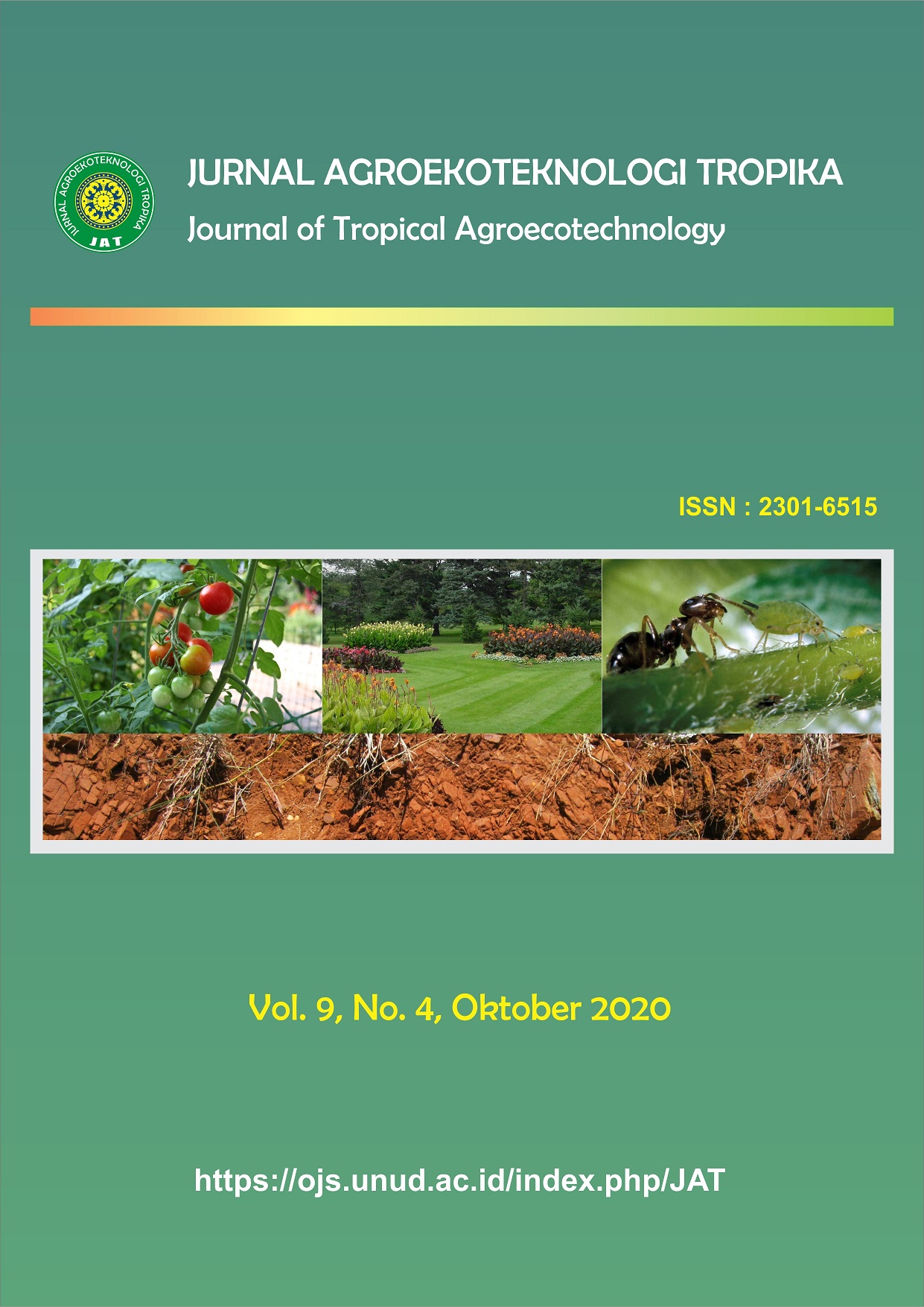Uji Daya Hambat Bakteri Paenibacillus polymyxa terhadap Pertumbuhan Jamur Colletotrichum sp. Secara In Vitro
Abstract
Inhibition Test of Paenibacillus polymyxa on the Growth of the Fungus Colletotrichum sp. in vitro
Fungus Colletotrichum sp. is an airborne pathogen that causes anthracnose disease in chili. Utilization of biological agents of Paenibacillus polymyxa is the choice in suppressing the growth and fungal attack of Colletotrichum sp. The use of biological agency is environmentally friendly. The purpose of this study was to determine the inhibitory properties of P. polymxya bacteria against the growth of the fungus Colletotrichum sp. in vitro.The results showed that P. polymyxa isolates C1 was able to inhibit the growth of C. acutatum isolates BLCB, C. gloesporioides isolates KLCR2, C. scovillei isolates SGCR, C. fructicola isolates KRCR, C. truncatum isolates DPCR2 and C. nymphae isolates BLCR, with the percentage of inhibition ranging from 82.74% to 86.52%. Bacterial filtrate P. polymyxa C1 was able to inhibit the growth of fungal colonies of C. acutatum isolate BLCB, C. gloesporioides isolate KLCR2, C. scovillei isolates SGCR , C. fructicola isolates KRCR, C. truncatum isolates DPCR2 and C. nymphaeae isolates BLCR with inhibitory power percentage ranging from 71.90% to 82.48%.



